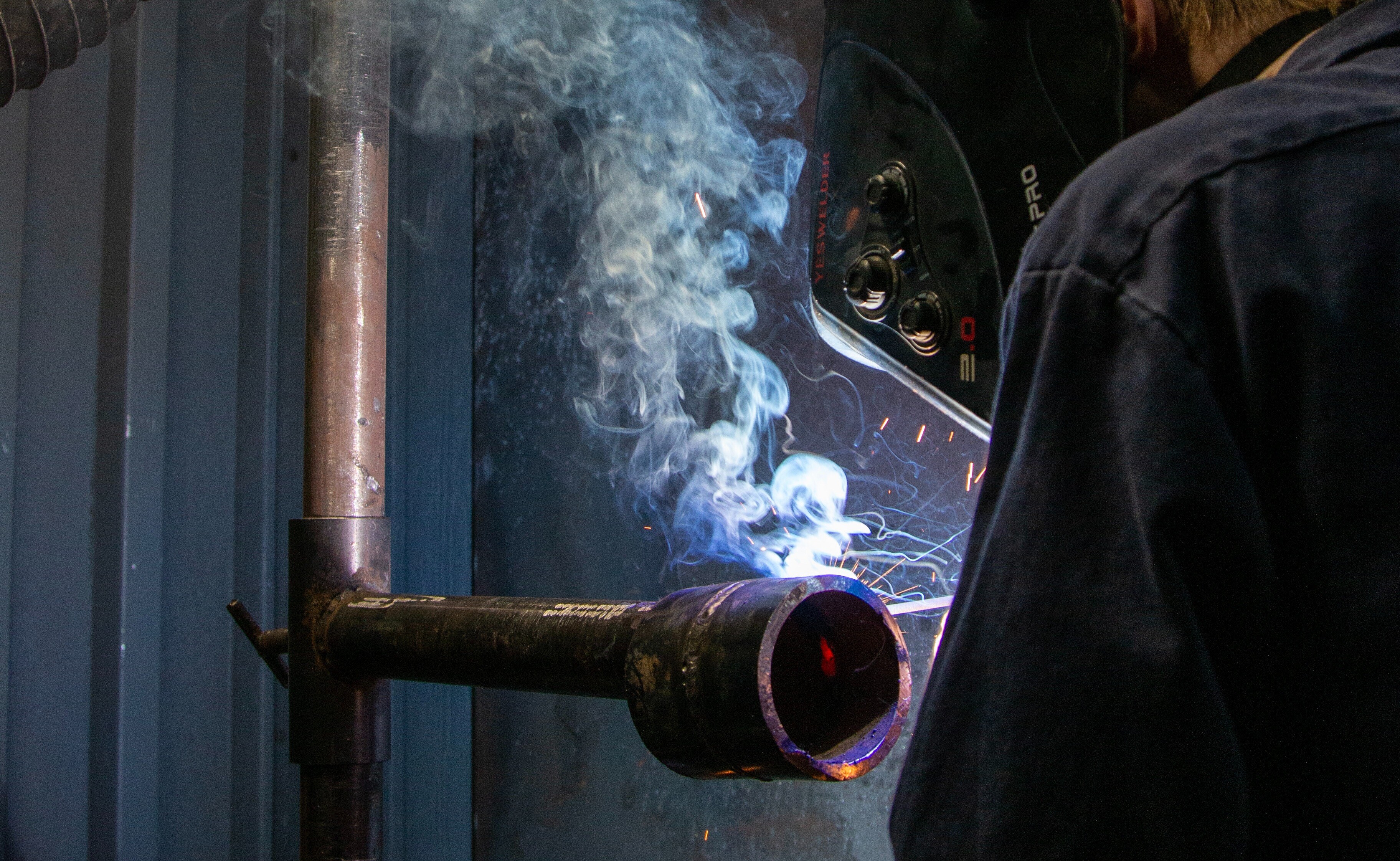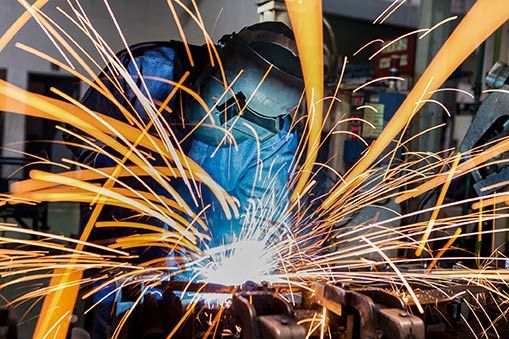Everything about Welding: Key Insights Into Techniques and Ideal Practices for Success
Welding includes a range of methods, each suited for details materials and applications. Understanding these techniques, such as GMAW, SMAW, and TIG, is crucial for accomplishing perfect results. The best devices and security methods can not be ignored. As prep work and troubleshooting play crucial roles in the welding process, grasping these components can greatly boost the quality of the end product. What are the essential aspects that ensure an effective weld?
Comprehending Different Welding Techniques
Welding strategies encompass a variety of methods, each matched to details applications and materials. Among one of the most usual methods are Gas Metal Arc Welding (GMAW), Protected Steel Arc Welding (SMAW), and Tungsten Inert Gas Welding (TIG) GMAW, also understood as MIG welding, is preferred for its speed and flexibility, making it ideal for thin products. SMAW, or stick welding, is favored for its simplicity and efficiency in outside environments, particularly with thicker steels. TIG welding offers accuracy and control, making it suitable for elaborate work and non-ferrous steels (Montana Mobile Welding and Repair Belgrade Welding). Each technique has its distinct advantages and factors to consider, enabling welders to choose the most effective method based on the project's needs, product type, and desired outcomes. Understanding these techniques is essential for successful welding
Necessary Welding Devices and Tools
While numerous welding strategies require certain abilities, the ideal devices and tools are just as crucial for accomplishing high quality results. Vital welding equipment includes welding devices, which differ depending upon the strategy-- such as MIG, TIG, or stick welding. Safety equipment, including safety helmets, aprons, and handwear covers, assurances safety and convenience during the process. Furthermore, components and clamps assist protect materials in area, making sure precision in welds. Consumables like welding rods, cord, and shielding gas are also essential components that influence the high quality of the weld. Devices such as grinders and cutters facilitate surface preparation and post-weld ending up, adding to a professional result. Purchasing top notch tools ultimately enhances the performance and effectiveness of welding jobs.
Safety Practices in Welding
Proper security methods are necessary in the welding market to protect employees from possible dangers. Welders have to wear proper personal safety equipment (PPE), including headgears with appropriate shading, handwear covers, and flame-resistant clothing. Adequate ventilation is crucial to decrease exposure to hazardous fumes and gases produced throughout the welding process. Additionally, workers need to be learnt the appropriate handling of welding tools to stop mishaps. Fire precaution, such as maintaining flammable materials away from the welding location and having fire extinguishers easily offered, are essential. Normal assessments of tools and work areas can aid identify prospective threats before they cause crashes. By sticking to these safety techniques, welders can produce a safer working setting and minimize risks associated with their trade.
Preparing Products for Welding
Preparing materials for welding is an important action that considerably influences the high quality and honesty of the final item (Montana Mobile Welding and Repair Belgrade Welding). Correct prep work involves cleansing the surface areas to get rid of pollutants such as dirt, corrosion, and oil, which can endanger the weld. Strategies such as grinding, fining sand, or using solvents are frequently utilized to attain a clean surface. Furthermore, guaranteeing that the materials fit with each other comfortably is crucial; spaces can result in weak welds. It's also crucial to take into account the positioning and positioning of the components, as this will affect the ease of welding and the final result. Finally, picking the appropriate filler product and guaranteeing compatibility with the base metals is crucial for accomplishing strong, resilient welds
Tips for Achieving High-Quality Welds
Accomplishing top notch welds needs attention to detail and adherence to ideal methods throughout the welding process. Proper joint prep work is vital, guaranteeing surfaces are cost-free and clean from impurities. Choosing the suitable filler product and welding method based on the base steels is important for optimal bonding. Maintaining constant travel rate and angle while welding can avoid defects and advertise harmony. Furthermore, controlling warm input is necessary; excessive warm can lead to bending and weakened joints. If needed, frequently checking the welds throughout the procedure enables for prompt modifications. Employing ideal post-weld therapies, such as cleansing and tension alleviation, can boost the durability and stability of the weld, inevitably guaranteeing an effective result.
Fixing Usual Welding Issues
Welding commonly presents challenges that can affect the top quality and integrity of the last product. Typical concerns such as porosity, irregular weld grains, and overheating can arise, each requiring certain troubleshooting techniques. Recognizing these issues is essential for welders to boost their skills and attain excellent outcomes.
Porosity Troubles Described
Porosity can typically be neglected, it remains a crucial concern in welding that can compromise the integrity of a finished product. Porosity refers to the presence of small gas pockets within the weld grain, which can compromise the joint and lead to premature failure. This issue typically arises from impurities, dampness, or incorrect protecting gas coverage during the welding process. To mitigate porosity, welders must validate that the base materials are tidy and completely dry, utilize proper securing gases, and keep regular welding criteria. On a regular basis checking the equipment and atmosphere can additionally assist identify possible concerns prior to they manifest in the weld. Addressing porosity properly is crucial for attaining solid, long lasting welds that satisfy high quality standards.

Irregular Weld Beans
Irregular weld grains can significantly impact the top quality and strength of a completed product. Numerous aspects add to this concern, consisting of incorrect travel rate, inaccurate amperage settings, and irregular electrode angles. When the welder relocates too quickly, a grain may appear narrow and lack infiltration, while relocating as well gradually can cause extreme accumulation. Furthermore, using the wrong amperage can lead to either damaging or too much spatter, both of which concession weld stability. The welder's technique, such as inconsistent lantern motion, can also bring about uneven bead look. To alleviate these issues, welders should concentrate on keeping steady, regulated activities and making sure correct more info equipment setups to attain harmony in their welds. Uniformity is crucial to achieving dependable and solid welds.
Overheating and Bending Issues
Extreme warmth during the welding process can cause considerable overheating and buckling problems, affecting the structural integrity of the work surface. These issues typically show up as distortion, which can compromise placement and fit-up, making additional assembly challenging. Factors adding to overheating consist of the selection of welding parameters, such as voltage and take a trip rate, as well as the type of material being welded. To mitigate these concerns, welders should maintain constant travel speed and ideal heat input while checking the work surface temperature level. Additionally, pre-heating or post-weld heat treatment can help reduce anxieties caused by fast air conditioning - Montana Mobile Welding and Repair Belgrade. Routine evaluation and adherence to best techniques are necessary in protecting against overheating and making certain the durability and reliability of welded frameworks
Regularly Asked Questions
What Are the Career Opportunities in the Welding Market?
The welding sector supplies varied occupation possibilities, consisting of positions as welders, teachers, engineers, and inspectors. Specialists can operate in production, construction, aerospace, and automobile industries, gaining from solid need and affordable incomes in numerous roles.
How Can I Improve My Welding Speed Without Compromising High Quality?
To boost welding speed without compromising top quality, one must practice efficient techniques, maintain tools, maximize setups, and boost hand-eye coordination. Normal training and looking for comments can likewise substantially add to achieving faster, high-quality welds.
What Certifications Are Available for Welders?
Various accreditations exist for welders, including those from the American Welding Culture (AWS), the National Center for Construction Education and Research (NCCER), and various industry-specific companies. These credentials boost employability and show skill proficiency.
Just How Does Welding Impact the Features of Metals?
Welding affects the buildings of steels by changing their microstructure, which can result in changes in toughness, ductility, and hardness. Warm input and cooling prices during the process significantly affect these material qualities.
Can I Weld Dissimilar Metals Together?
